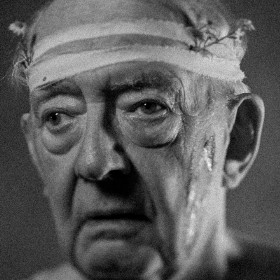Michael Coveney: Fringe fare for all at the dear old Cockpit, buzzy Park and brand new Hope

I've been going sporadically to the Cockpit Theatre in Gateforth Street, off Lisson Grove, for as long as I've been writing about theatre. The venue was founded by the old Inner London Education Authority as one of the first community centres in the capital. It still has an aura of the evening class and the drama class about it, and the narrow bench seating always makes you feel suitably virtuous and receptive.
But I noticed something else at Saturday night's final preview of Darker Purpose Theatre's King Lear, starring that wonderful old character actor David Ryall in the title role (a case of an obvious Gloucester, or Fool, winning a deserved promotion): the audience was more relaxed, more mixed, more varied in age and ethnicity than any other I've seen in London for ages.
And they absorbed the play as if hungry for it, gorging themselves on it, many of them, for the first time. And very shocking they found it, too, and not remotely remote, I imagine, from their own personal experience of old age, unkind daughters, turncoat sons, foul weather and physical hardship.
Not only that, the director appeared beforehand to say that Ryall had lately undergone a course of chemotherapy which made it difficult for him to retain the lines, so he played the entire performance holding a script, which he consulted without fear or furtiveness. This really was a frail and weak old man, but his innate authority was never in doubt.
Nobody asked for their money back, and nobody left. You get the same kind of informal, easy atmosphere, a little more upmarket, at Jez Bond's new Park Theatre in Finsbury Park, where the collector's item of a musical, Do I Hear a Waltz?, the sole collaboration between Richard Rodgers and Stephen Sondheim, is the kind of boutique fringe production that might just catch on with a local audience, as well as the aficionados.
Even fringe theatre going isn't cheap these days, and invariably twice as expensive as cinema seats. The Cockpit is charging £15 (£12 concessions) for King Lear, while tickets at the Park are £19.50 (and £16 concessions). But for the true impoverished devotees there are always cheaper previews and "pay what you can" nights.
One of London's newest fringe venues, the Hope, in an upstairs room of the Hope and Anchor pub on Upper Street, is more in line with the Cockpit, charging £14 (and £12 concessions) but also making a great point of informing the audience, before the show starts, that all the actors are paid; not very much, but something.
This is partly in response to a row that broke out last year about payment, or non-payment, of actors on the fringe, and partly to reassure the audience that this is indeed proper "professional" theatre and not part-timers' am-dram. It still remains a fact, though, that many actors work for next to nothing (sometimes their travel expenses) on the fringe, out of choice, if not desperation to be employed.
The Hope, which opened last November, is the brainchild of Adam Spreadbury-Maher (I always think of him when spreading my marmalade on a piece of slightly burnt toast), who runs the King's Head these days as a wildly informal mini-opera house.
It's a pleasant enough spartan room, with just fifty seats, and on Friday night they premiered a new play, The Boy Who Cried by Matt Osman, from a new production company – Mary Franklin's Rough Haired Pointer – that mixes medieval legends of werewolves with modern ideas of depression; in its weird brew of Big Brother satire, domestic confusion, and strange lycanthropic tendencies, it's a heady, if imperfect, brew of George Orwell, R D Laing and Jacobean tragedy.
I dropped in to see the play (or the very long first act, at least) en route to another engagement, but I saw enough to know that Rough Haired Pointer, who have already produced an acclaimed version of Daisy Ashford's The Young Visitors, and a play about Cleopatra (Mary Franklin's mother, the award-winning non-fiction writer Lucy Hughes-Hallett, wrote the definitive modern history of Cleopatra some years ago) might yet develop into a potent force on the fringe.
And if so, the Hope will spring eternal for a few more years, perhaps, joining the long-established Cockpit and the buzzy new Park as a regular destination venue for audiences who are counting their pennies as well as avoiding the stricter formalities (and prices) of the West End and the National Theatre.
Of course, the Hope's situation on Upper Street means it's not only just up the road (if you're coming from the Angel) from the King's Head itself, but also from the Almeida and the Union Chapel, where the RSC has been rehearsing its new productions of Henry IV Parts One and Two. And the street is rich in pubs and restaurants, so it's a good locality all round.
Right next to the Hope is a Japanese restaurant called Sen Nin, which I coincidentally visited for the first time early last week. The food is wonderful, the prices more than reasonable. And when I asked if they'd just opened, they said they'd been operating here for nine years.
Which just goes to show, however many times you go up and down the same street, there's always something new to discover. I don't feel so bad that Young's, one of my favourite Chinese restaurants, a few blocks along towards the Almeida is now no more. And right next door to Sen Nin is a fairly new posh fish and chip shop, called The Fish & Chip Shop, which is very good indeed. And that really did open only last year, just before the Hope. So what you save on your theatre tickets you can lose on some potted shrimps and plaice fillets.










